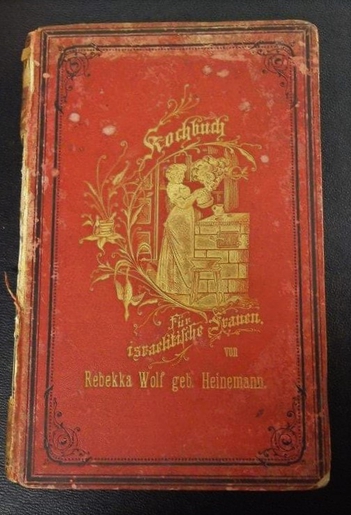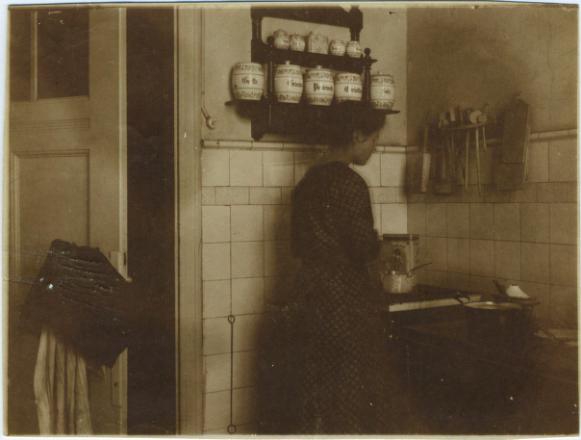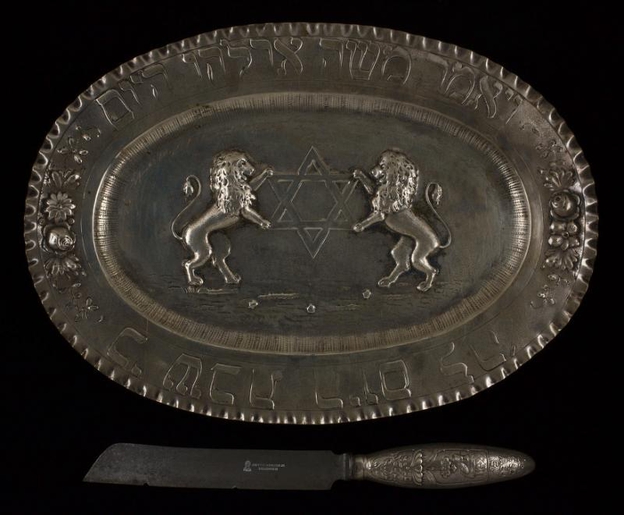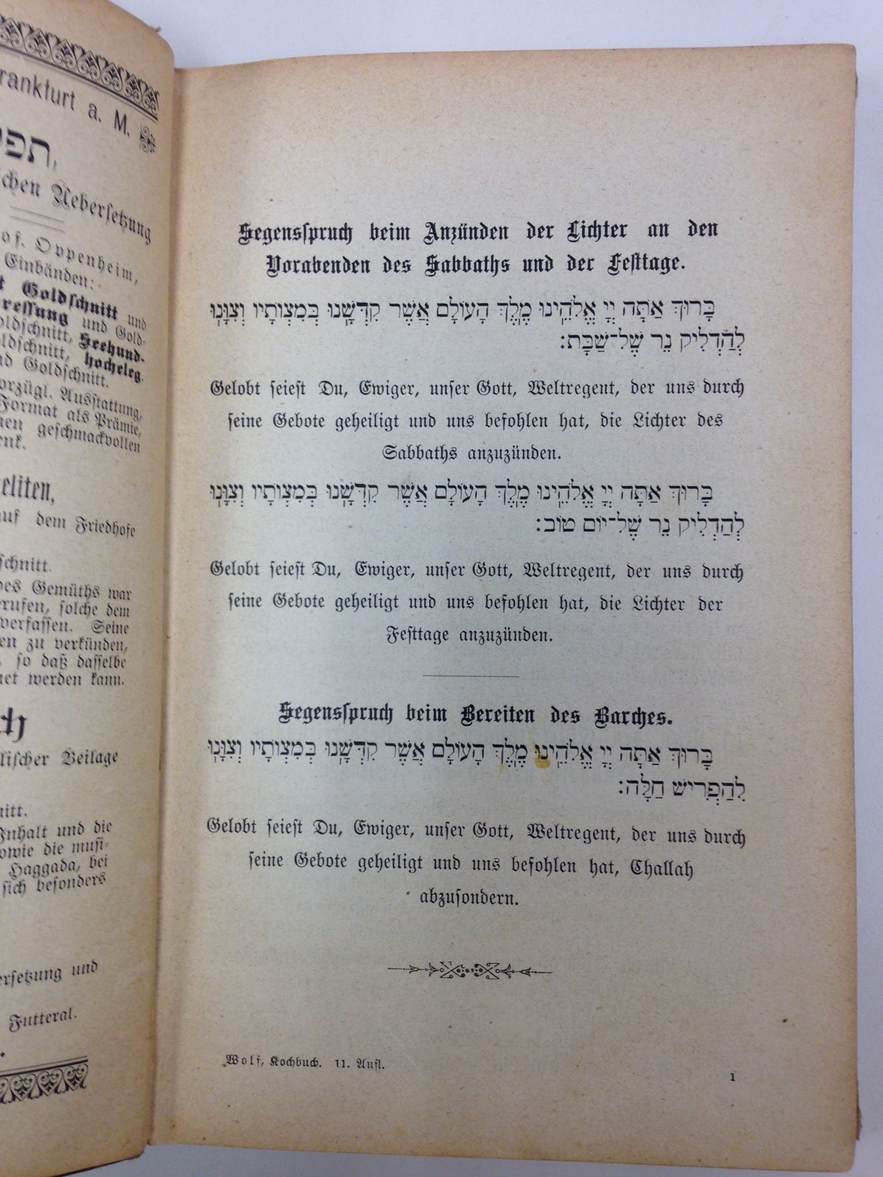Rebekka Wolf's Home Manual for Young Brides
Creating a Jewish Home



Based on the number of times new editions of her cookbook were published, one could make the assumption that Rebekka Heinemann Wolf’s cookbook was more popular than even Bertha Gumprich’s seminal cookbook. The first edition of Kochbuch für israelitische Frauen ("Cookbook for Jewish Women") was published in 1851 in Berlin. Currently, Worldcat lists only one copy of the first edition worldwide at Indiana University Bloomington. Since its first publication in 1851, Wolf’s cookbook was continuously revised and expanded through 14 editions, the latest known edition published in 1933 in Frankfurt. There were even Dutch (Kookboek voor Israëlitische huisgezinnen. Almelo : Blenken, 1881) and Polish editions (Polska kuchnia koszerna. Warszawa : nakł. tłumacza, 1877).
Despite the author’s apparent popularity, there is little easily obtainable biographical information about Wolf other than what can be surmised from her cookbooks. Based on the first edition’s subtitle, which states that her cookbook contains “recipes from different cooking and baking styles from regions where the author lived in for many years,” one could guess that she may have been employed in household kitchens in many different regions of Germany, possibly even in regions outside of Germany. In the fourth edition, published in 1865, she mentions her age as 64 years old, which would make her year of birth 1801.

Although Wolf’s cookbook offered housewives the opportunity to surprise guests and family with “einem fremdartigen Gerichte” (an exotic dish), most of her dishes are German cuisine: dumplings, potato dishes, cakes, roasts. What was really special about the Kochbuch für Israelitische Frauen was its emphasis on Jewish customs. Although other practical cookbooks existed, Wolf's cookbook filled a gap for Jewish households. All of her dishes were written with Jewish religious practices in mind. In the forward to the first edition, she wrote that she intended her cookbook for Jewish women who want to prepare plain meals with economy, but also be able to cook fancier dishes for guests and holidays. In particular, she wrote that many newly married Jewish daughters hadn’t learned the traditional religious practices before they left their parents’ home, which created a dilemma if a young woman’s husband was religious. Wolf’s book was not only practical—the author stressed that she excluded all frivolous instructions, like directions on washing silks—it was also a guide to aide women in the role of safe guarding Jewish religious tradition in the home and in the kitchen. Her cookbook had directions for how to prepare kosher meat and set up a kosher kitchen. She even included the blessing women needed to say while lighting candles on the Sabbath, written in both Hebrew and German.
Over the years, Wolf’s cookbook was revised and improved many times. In the second edition, she added recipes Passover (which she calls “Osterfest,” or Easter holiday), which included recipes for Linzertorte made with goose fat and potato flour; fried fish with garlic; and matzah balls. In her third edition, she incorporated menus both for everyday dishes and “feinere Küch” (fancy or elegant meals). Menus for a "feinere" meals were in part to aide women in establishing middle class lifestyles. In her fourth edition, she added a “Kleine Hausapotheke” (a household guide to first aid). This guide had cures for every common ailment: headaches, toothaches, foot pains, stomach pains, poor eyesight, worms in children, etc., some of which are cringe-inducing (for example, her suggestion to cure “weak eyes” by rinsing them with corn brandy). The “Hausapotheke” was removed with the 10th edition when, according to the introduction, contemporary advancements in medicine made Wolf’s tips obsolete. Each new edition added new recipes or improved on the selection of recipes, eventually including recipes from southern Germany and Austria. Wolf also provided general tips for the kitchen, many of which we strongly discourage you from trying at home. In her eleventh edition, she offered her readers advice on how to keep eggs fresh (pages 7-8):
One takes slaked lime, thins it out with water, places eggs that were laid in August or September in a stone pot and slowly pours the slaked lime water on top of it. The water should cover over the top of the eggs. The eggs will stay fresh throughout winter in this way. Don’t put any preserves near the pot or they will rot.
Or how to thoroughly cook old meat:
For beef as well as old goose, which one admittedly has to cook or roast a little longer, one can cook it thoroughly in a much shorter time, if one lays on the bottom of the container a clean piece of glass. The glass only needs to be as big as a hand and one does not need to fear that the glass with splinter during the cooking, but the broth will definitely need to be run through a sieve.
![[Still life in Kitchen], 1951](/media/images/still_life_with_lemons.width-883.png)
Or how to keep lemons fresh:
Each lemon is wrapped in white paper and layered with dried salts in a stone pot. The stone pot has to be covered so that it is airtight and must also be a little covered.
Some of Wolf’s advice is certainly out-of-date in the 21st century, but many of her recipes, like strudel with cheese or poppy seed fillings, or stuffed duck breast, are timelessly delicious.